A spiritual lineage is a stream of transmission across generations and geographic locations from teacher to teacher that eventually can be traced back to the historical founder of our religion, Buddha Shakyamuni. Lineage is important in Buddhism because it shows that a particular community follows an authentic line of teachers and dharma; thereby certifying that its teachings and practices are genuine. In traditions such as Zen and Ch’an, transmission is an unbroken chain of the teachings that is orally and directly transmitted from teacher to student but in other schools of Buddhism such as the Pure Land School, transmission is not dependent on personal transmission but can be transferred across time and place, skipping generations, via the exclusive working (Hongan) of the Great Compassion.
Our founding teacher, Rev. Daishin Senpai, M.A. has identified 12 great masters and teachers who have affected the spiritual journey of our Fellowship since its inception in 2001. Some coincide with the traditional Pure Land Buddhist masters but several more teachers are added to recognize and honor their influence that has created the Fellowship’s unique spiritual flavor and novel perspective. A couple of our lineage teachers include members of different religious schools. Below is a list of our lineage teachers and a brief summary of their contributions.
It is important to note that we are an independent American religious organization and are not affiliated with any Asian-based Buddhist institution. Initially, we established ourselves as the first indigenously created Shin organization in the Americas; later, in 2005, we established a new umbrella association to carry forth our innovative teachings and practices to affiliated communities throughout the continent. These days, since the Covid-19 health crisis, we have evolved into a smaller organization exploring, as well as, striving to practice Shin Buddhism in a contemporary American context.
Dr. (Rev.) Taitetsu Unno (1929-2014 C.E.) 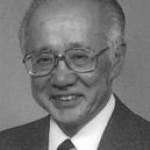
He received his PhD in Buddhist Studies at the University of Tokyo in 1968 and later was a professor at Smith College in Massachusetts, USA. During his long productive life he made notable contributions to Buddhist scholarship and wrote two modern classics, River of Fire, River of Water (1998) and Shin Buddhism: Bits of Rubble Turned into Gold (2002) that would become the spiritual foundations of our Fellowship. Later in his life, many would consider him North America’s most exemplary Buddhist teacher. Together with his literary contributions and as founder of the Northampton Shin Sangha, he helped popularize Shin Buddhism in the English-speaking world. Additionally, he was instrumental in establishing the Buddhist Faith Fellowship by assisting its founder, Rev. Daishin Senpai, M.A., who was his long-time sangha member and later student via the Northampton Lay Teachers Program. In the early years of the Fellowship, Dr. Unno guidance of BFF of CT ‘s liturgy, practice, and personal example were key factors in its later success. For many, Dr. Unno is considered the grandfather of our organization.
Kyozawa Manshi (1863-1903 C.E.)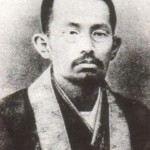
He was a dedicated and sincere seeker, important reformer, and a leading writer of Buddhism during the Meiji and Modernization Period (1868-1912) in Japan. He studied at the University of Tokyo and later founded the present-day Otani University. He was essential in initiating, the Seishinshugi, a Buddhist modernist movement, that focused on updating Buddhist teachings for the contemporary period that took into account early Buddhism, Western philosophy, and modern science. His philosophy has been compared to European existentialism and has since influenced a number of generations of Buddhist reformers across several continents in the 20th century.
Rennyo (1415-1499 C.E.)
Rennyo was a descendant of Shinran and the Eight Monshu (Master) of the Jodo Shinshu school in Japan. His extensive teachings to the masses, and organizational and political talents made Jodo Shinshu aka Shin Buddhism the largest and most powerful religious movement in the 15th century and beyond. He updated Shinran’s teachings in order to better speak to common people of this time period. He reformed and innovated liturgy and practices that are still used to this day. It is for these reasons, he is considered by many as the second founder of Shin Buddhism.
Shinran (1173-1263 C.E.)
Shinran was a religious reformer, prolific writer, and religious genius whose rich legacy has traversed the centuries within Japan and around the world. As a faithful disciple of Honen, he furthered developed, innovated, and propagated his teacher’s ideas to the masses. His viewpoints questioned many long-standing Buddhist traditions that no longer spoke to ordinary people and challenged the power of the elites. As a religious revolutionary, he was the first to officially break the monastic celibate tradition by entering into marriage. His spiritual insights brought to Buddhism the idea that even the most lost, unskillful, and wicked were the main concern of Boundless Compassion. No longer was emancipation tied to doing some religious practice like meditation, Buddha Name recitation, prayer or chanting to appease a deity or some religious ideal but spiritual liberation was the exclusive domain of universal grace via the awakening of the entrusting mind (shinjin) of Boundless Compassion. After his death, his followers created a new Pure Land School called Jodo Shinshu, The Essence of the Pure Land Way, which would later become Japan’s most prominent Buddhist school.
Honen (1133-1212 C.E.) 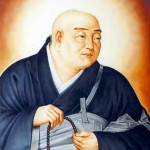
As a religious revolutionary, Honen was the first to create an independent Pure Land school that would be called Jodo Shu. Influenced by Shan Tao’s and Genshin’s writings, his teachings removed complex Buddhist beliefs and practices of those times and replaced them with a simple faith in Boundless Compassion and the practice of voicing the Buddha Name (Nembutsu). His missionary passion, open-mindedness, and easy practice unlocked the Buddhist path for the masses, especially for women and the lower classes that at this time period were denied full participation in society and religious pursuits. Because of his growing popularity and influence, Emperor Gotoba eventually exiled him and his disciples including Shinran (above). His most famous work is the Senchaku Hongan Nembutsu-shu (Passages on the Selection of the Nembutsu in the Primal Vow) that outlines his revolutionary spiritual path.
Genshin (942-1017 C.E.)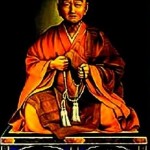
This Japanese Tendai monk, scholar, and prolific writer ardently espoused the Pure Land teachings to the masses. Among his many contributions, he taught that the recitation of the Buddha Name was the best vehicle for spiritual fulfillment for the people of his age (mappo). His most important literary work is the Ojoyosho (The Essentials for Rebirth in the Pure Land), which drew teachings from many texts like the Contemplation Sutra, and was the first book to be printed in Japan, thereby influencing generations to come.
Of the many masters in our lineage, this well-known Chinese master’s teachings and practices still resonate with hundreds of millions in the 21st century. Among his many contributions to the evolution of Buddhism, he popularized the notion that Amida Buddha as the most important Buddha among the many Buddhas. Importantly, he taught that the Buddha Name alone is sufficient enough for spiritual liberation over other practices like visualization and meditation. Importantly, he formulated the Five Practices, expounded the significance of repentance and faith, and created an extensive liturgy that is still used to this day around the world.
Tao Ch’o (562-645 C.E.)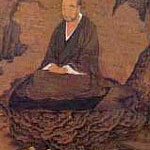
During a time of war and famine, this Chinese Buddhist master and philosopher advocated devotion to Boundless Compassion and dedication to Pure Land practices in order to unfold spiritual awakening. He integrated the teachings of Difficult and Easy Paths with Self and Other Power. He was the first to teach that during our Latter Age of the Dharma (mappo), due to the weakened influence of the dharma and sangha, and loss of people’s capacity to truly practice Buddhism, the most skillful means to reach full spiritual liberation was through the easy practice of the Buddha’s Name.
Tan Luan (476-542 C.E.)
This Chinese monastic and scholar wrote extensively on the principal Pure Land scripture, the Larger Sutra, and clearly explained that the Primal Vow would emancipate all beings through the voicing of the Nembutsu. Due to his total reliance on Boundless Compassion, he was the first to use the Buddha Name, Namo Amitoufo in Chinese or Namo Amida Butsu in Japanese (I entrust myself to awakening of Infinite Life and Light aka Boundless Compassion) as the best means to spiritual liberation. In addition, he was the first to teach the concepts of Other Power and Self Power.
Vasubandhu (4th-5th century)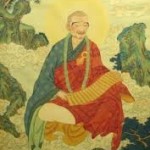
An influential philosopher from Greek influenced Kingdom of Gandhara (Pakistan & Afghanistan), and half brother of another famous philosopher of the period, Asanga, he wrote extensively on the Adhidharma (Buddhist commentaries) and was one of the founders of the Yogacara school. Furthermore, he was a fervent follower of the Pure Land Way, writing such works like the Discourses on the Pure Land, expanding the philosophy of Nagarjuna, creating new practices for adherents, and greatly encouraging others to follow the Pure Land teachings.
Nagarjuna (150-250 C.E.)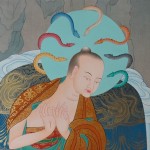
An Indian teacher and philosopher, he was the founder of the Madhayamaka (Middle Way) school of Mahayana and is known by many scholars as the second Buddha. Not only did he develop the philosophy behind the Prajnaparamita Sutras (The wisdom tradition), he was the first major philosopher to expand and promote the Pure Land teachings. He taught that the Buddhist teachings offered two paths: The Difficult Path and the Easy Path. He proclaimed that the Pure Land teaching constituted the Easy Path and therefore is the most effective way for the masses to realize enlightenment.
Ananda Bhikkshu (6th century B.C.E)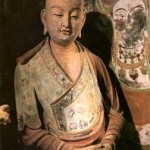
He was a cousin, closest attendant, and disciple of the historical Buddha who had a special ability to memorize the Buddha’s discourses over many decades. Although Ananda was not a Pure Land teacher per se, he, with Maitreya and others, was the first to receive its transmission from the Buddha on Mount Gridhruta and experience a direct insight into the light of Boundless Life and Compassion, as recorded in the Larger Sutra of Immeasurable Life. Thus, his personal encounter with this teaching begins the transmission of the Pure Land dharma from generation to generation. Due to his extraordinary memory, without Ananda’s recollection of what would become the central scriptural texts, Larger and Smaller sutras, the Pure Land School might never had existed.
Buddha Shakyamuni (6th century B.C.E.)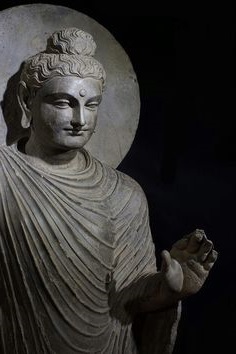
Born in present-day Nepal in the foothills of the Himalayas, the Buddha was also known as Buddha Gautama or Buddha Shakyamuni (The Sage of the Shakya Clan). The term Buddha means “The Awakened One.” Until the age of 28, he was a prince of the Kingdom of Kapilavastsu. At that age, he would renounce his wealth and royal position to become a wandering seeker of truth, studying under many philosophers and religious teachers. After 7 years of arduous study and practice, he decided to continue on his religious journey without a formal teacher. Finally, at the age of 35, he realized enlightenment under a pipal tree in Bodh Gaya. During his life-time, many would recognized him as the Tathagata, the One Who Comes From The Other Shore, whose sole mission was to benefit and liberate all sentient beings. Others would consider him to be an ordinary man who discovered, and was willing to share his path with others, but regardless of the point of view, his teachings would prove to be an extraordinary path for human flourishing that is marked by enduring happiness, well-being, and supreme spiritual liberation. As well as the founder of the Buddhist religion, he is recognized as the originator of all present-day traditional Buddhist schools. We do not consider him as just one of the masters of our lineage but its original discoverer and principal teacher.
